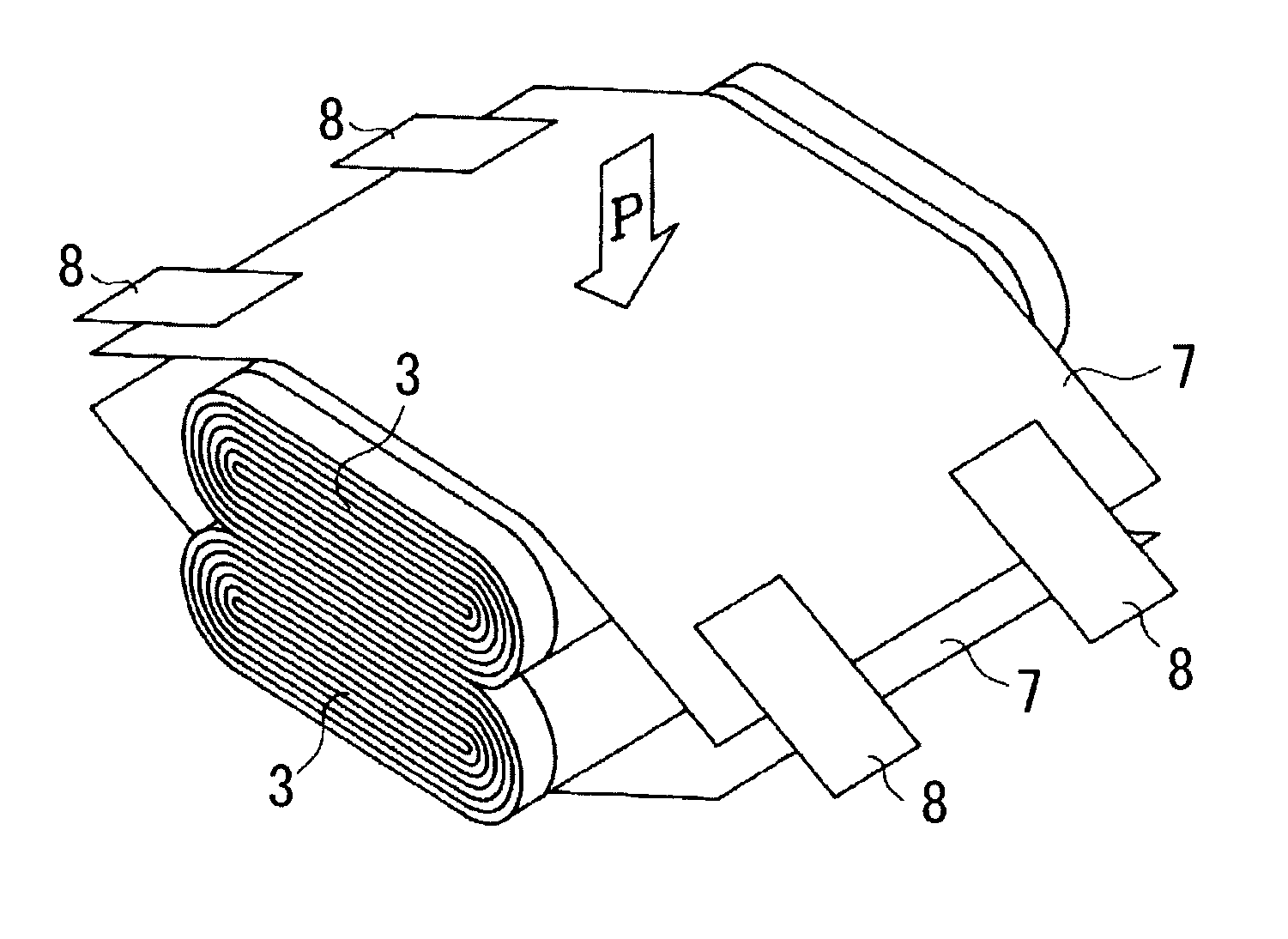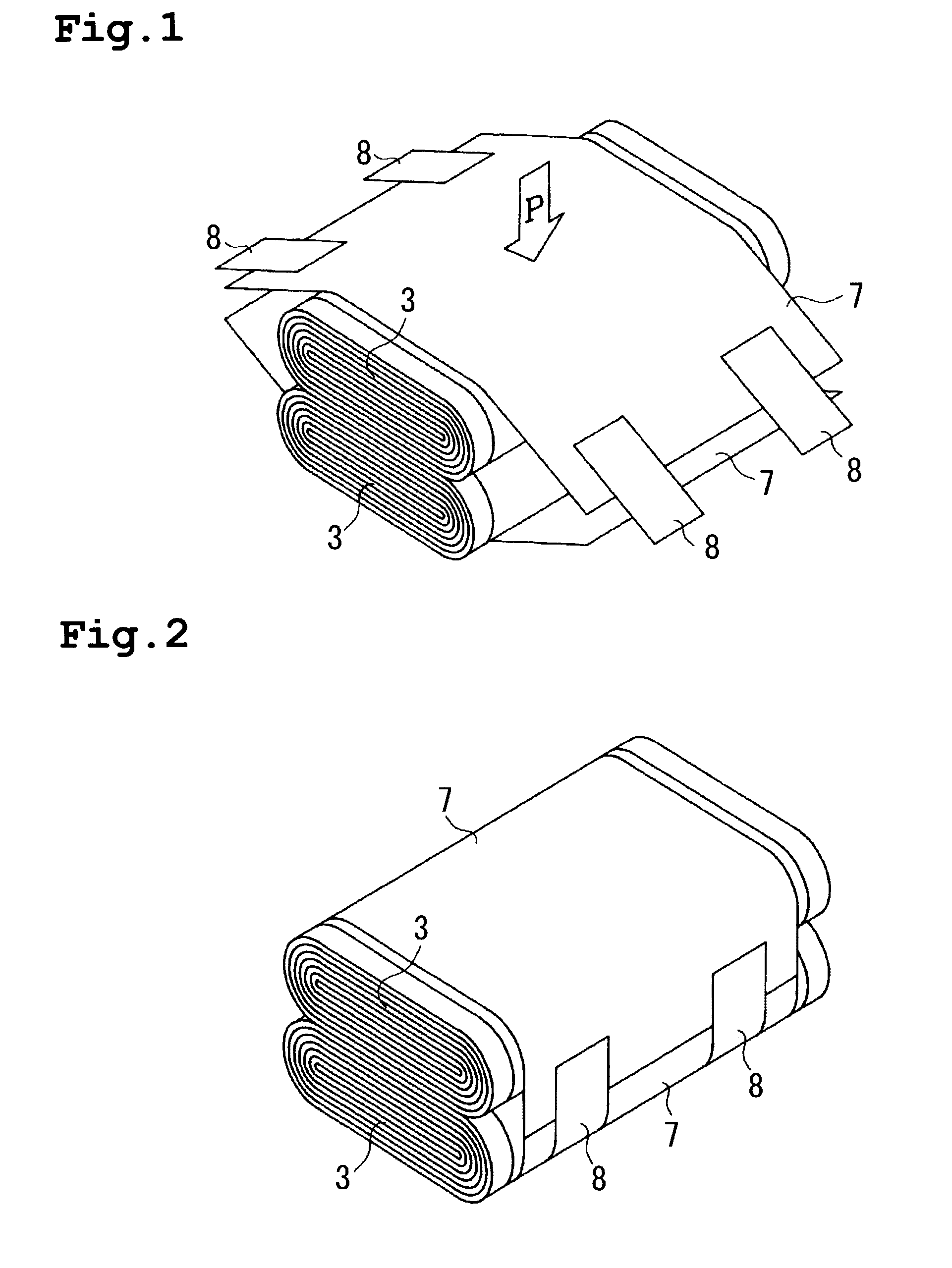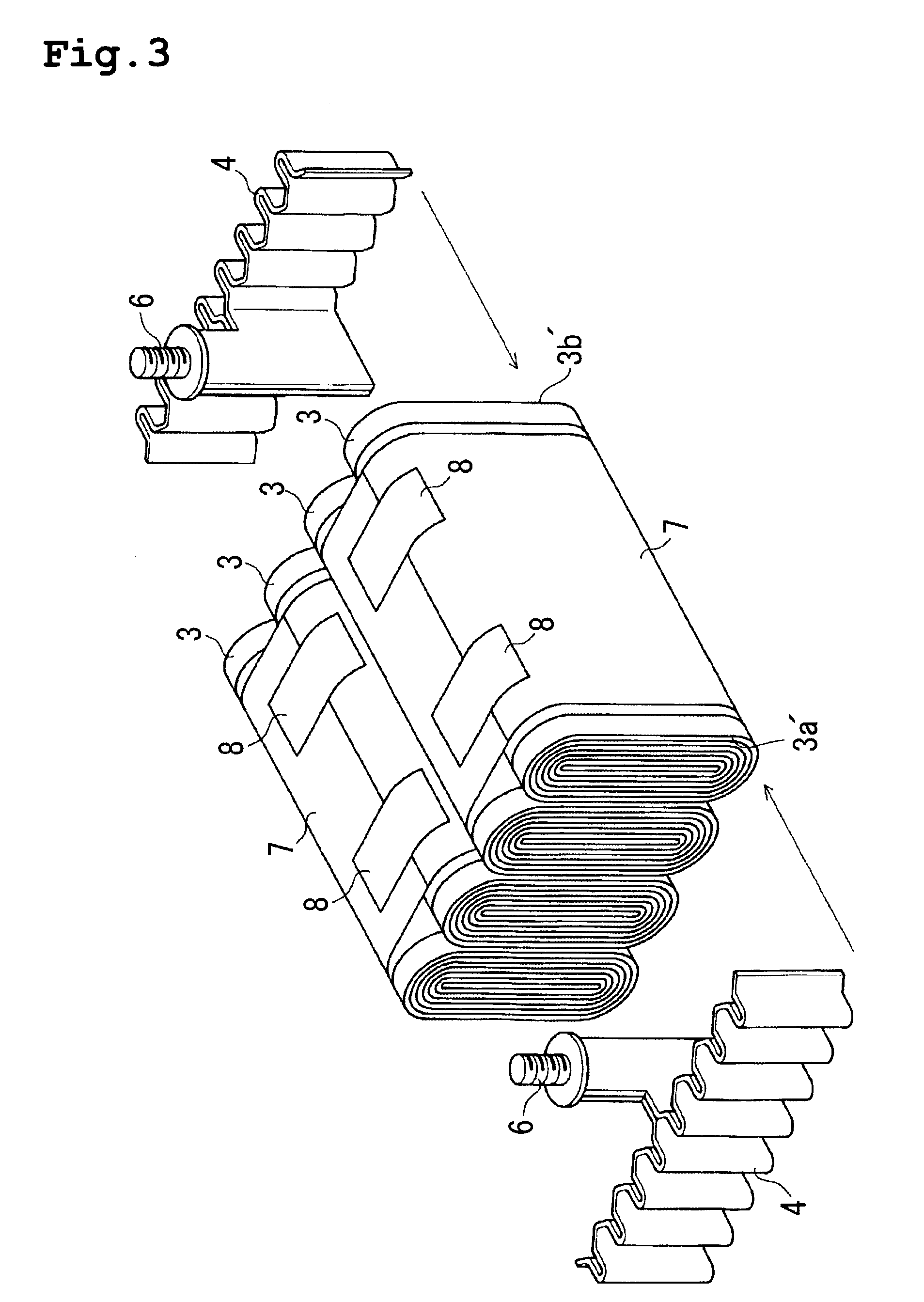Cell comprising a power-generating element fastened by sheets
a power-generating element and cell technology, applied in the field of cells, can solve the problems of small short circuit between the positive and negative electrodes, damage to the separation device, and material applied to the inner electrode may fall off, so as to prevent swelling, reduce cell capacity and service life of the cell.
- Summary
- Abstract
- Description
- Claims
- Application Information
AI Technical Summary
Benefits of technology
Problems solved by technology
Method used
Image
Examples
first embodiment
[0038]A first embodiment of the present invention will be described with reference to FIGS. 1 to 3. In the first embodiment, the present invention is applied to a large-scale nonaqueous electrolytic secondary cell. The cell comprises four generally elliptic cylindrical wound power-generating elements 3 as in the conventional cell shown in FIGS. 10 and 11. Each power-generating element 3 has a flat peripheral side face superposed on one of the adjacent element and is housed in a cell case 1. The power-generating elements 3 include positive electrodes 3a and negative electrodes 3b which are connected via current collectors 4 to positive terminals 6a and negative terminals 6b, respectively.
[0039]A strip-like positive electrode 3a and negative electrode 3b are wound into the shape of an elliptic cylinder with a separator 3c being interposed therebetween, as shown in FIG. 11. The positive electrode 3a includes a strip-like aluminum foil serving as a substrate. The aluminum foil has a sur...
second embodiment
[0049]FIGS. 4 to 8 illustrate a second embodiment of the present invention. In the second embodiment, the present invention is applied to a nonaqueous electrolytic secondary cell having a different current collecting structure from that in the first embodiment, and a metal foil of the electrode projecting from an end face of the power-generating element is bent at an arc portion.
[0050]FIGS. 4 and 5 illustrate a connecting structure for the power-generating element 3 and current collector 4. The nonaqueous electrolytic secondary cell includes a parallel connection of two elliptic cylindrical power-generating elements 3. Each power-generating element 3 comprises a horizontally disposed, generally trapezoidal collector body 4a and four generally comb-teeth-like slender connecting portions 4b that are diverged downward from a bottom side of the collector body 4a. Each connecting portion 4b includes a plurality of convex portions which are formed at predetermined intervals so as to protr...
PUM
 Login to View More
Login to View More Abstract
Description
Claims
Application Information
 Login to View More
Login to View More - R&D
- Intellectual Property
- Life Sciences
- Materials
- Tech Scout
- Unparalleled Data Quality
- Higher Quality Content
- 60% Fewer Hallucinations
Browse by: Latest US Patents, China's latest patents, Technical Efficacy Thesaurus, Application Domain, Technology Topic, Popular Technical Reports.
© 2025 PatSnap. All rights reserved.Legal|Privacy policy|Modern Slavery Act Transparency Statement|Sitemap|About US| Contact US: help@patsnap.com



